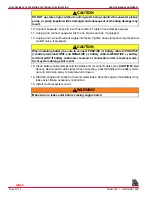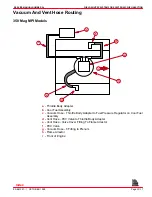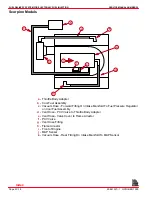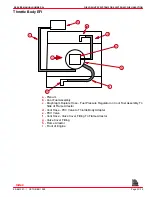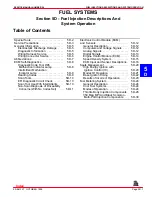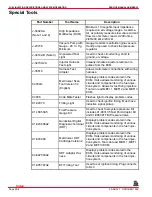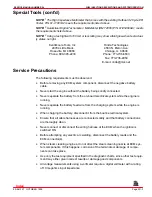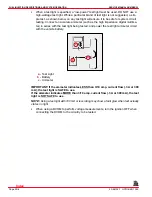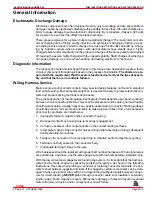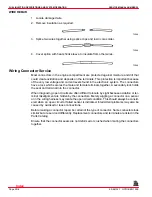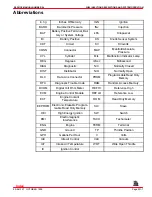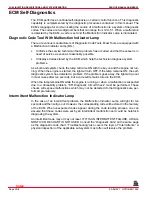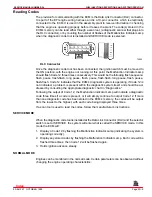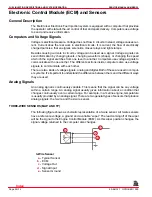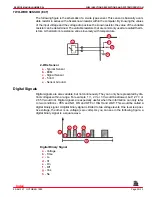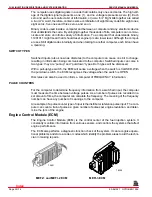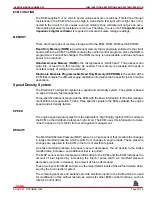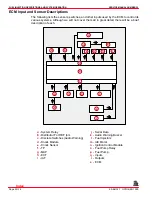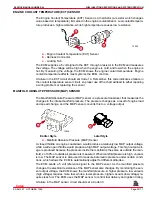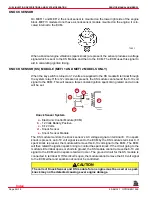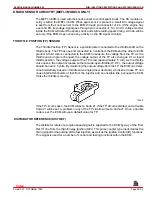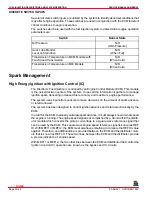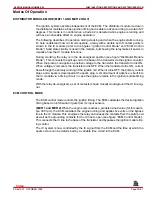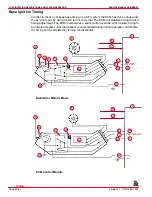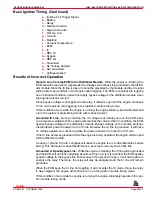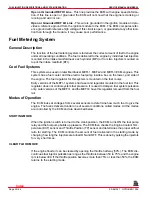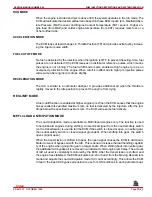
FUEL INJECTION DESCRIPTIONS AND SYSTEM OPERATION
SERVICE MANUAL NUMBER 24
Page 5D-10
90-861327 OCTOBER 1999
Scan Tools
The ECM can communicate a variety of information through the DLC connector. This data
is transmitted at a high frequency which requires a scan tool for interpretation.
With an understanding of the data which the tool displays, and knowledge of the circuits in-
volved, the tool can be very useful in obtaining information which would be more difficult or
impossible to obtain with other equipment.
Scan tools do not make the use of diagnostic charts unnecessary, nor can they indicate ex-
actly where a problem is in a particular circuit. Diagnostic tables incorporate diagnosis pro-
cedures using a scan tool where possible or a Diagnostic Code Tool (non-scan) if a scan
tool is unavailable.
EFI Diagnostic Circuit Check
After the visual/physical inspection, the On Board Diagnostic (OBD) Circuit Check is the
starting point for all diagnostic procedures. Refer to SECTION 5E.
The correct procedure to diagnose a problem is to follow two basic steps.
1. Are the on-board diagnostics working? This is determined by performing the On Board
Diagnostic Circuit Check. Since this is the starting point for the diagnostic procedures,
always begin here. If the on-board diagnostics are not working, the EFI Diagnostic Cir-
cuit Check will lead to a diagnostic chart in “Diagnostics” to correct the problem. If the
on-board diagnostics are working correctly, go to step 2.
2. If a code is stored, go directly to the numbered code chart in SECTION 5F or 5G as ap-
propriate. This will determine if the fault is still present.
Scan Tool Use With Intermittents
The scan tool allows manipulation of wiring harnesses or components with the engine not
running, while observing the scan tool readout.
The scan tool can be plugged in and observed while running the vessel under the condition
when the Malfunction Indicator Lamp turns ON momentarily or when the engine driveability
is momentarily poor. If the problem seems to be related to certain parameters that can be
checked on the scan tool, they should be checked while running the vessel. If there does
not seem to be any correlation between the problem and any specific circuit, the scan tool
can be checked on each position, watching for a period of time to see if there is any change
in the readings that indicates intermittent operation.
The scan tool is also an easy way to compare the operating parameters of a poorly operating
engine with those of a known good one. For example, a sensor may shift in value but not
set a trouble code. Comparing the senor’s readings with those of the typical scan tool data
readings may uncover the problem.
The scan tool has the ability to save time in diagnosis and prevent the replacement of good
parts. The key to using the scan tool successfully for diagnosis lies in the technician’s ability
to understand the system he is trying to diagnose as well as an understanding of the scan
tool operation and limitations. The technician should read the tool manufacturer’s operating
manual to become familiar with the tool’s operation.
Index

